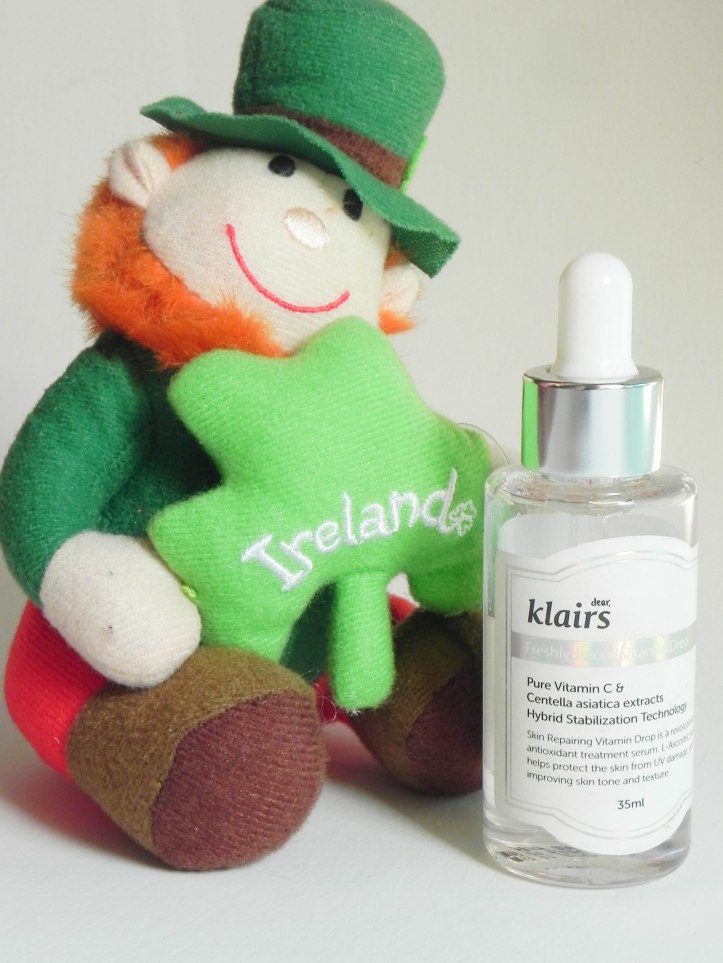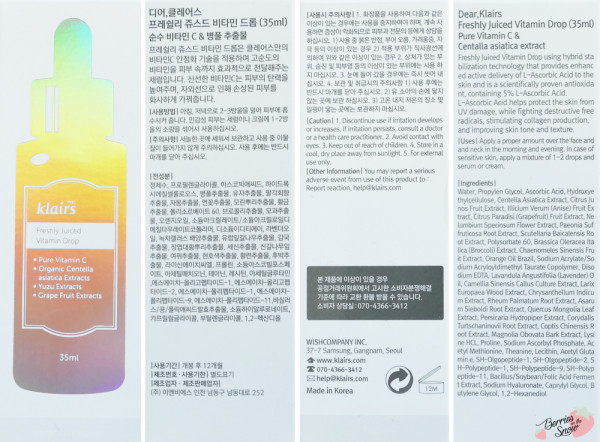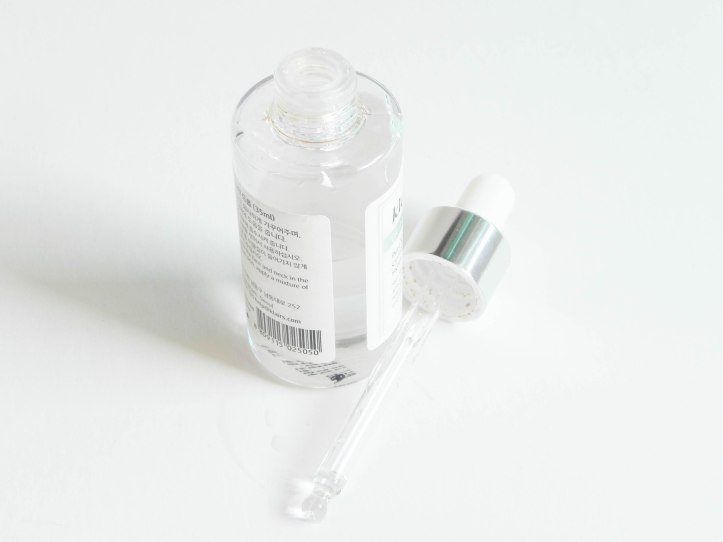
A word of caution: If life gives you lemons, please hand them over to Beyonce. She is apt at making lemonade out of lemons. But in any circumstances, you are not to put lemons on your face.
Vitamin C serums are all the rage these days. From Angels like Alessandra Ambrosio and Adriana Lima to Wayne Goss, everyone is raving about various brands of vitamin C serums for the past couple of years.
But apart from being a skin care fad, what really they bring to the table? In this post, I will carefully try to explain what Vitamin C serums actually are and their various benefits. But be warned. This is gonna be a long post. So grab a mug of green tea while you are at it.
Benefits of Using Vitamin C Serums:
Cosmetics that contain antioxidants are one of the most used methods of preventing skin damage by free radical. Free radicals are those evil things that are produced when your skin is exposed to UV light. (source)
Vitamin C, in its natural form, is an anti-oxidant that is water soluble. Environmental pollution, sun damage can’t be escaped, but a topical use of vitamin C can reverse the process.
So what can it do actually?
If you use this regularly along with products that enhance its activity, Vitamin C will provide a wide range of benefits to keep your skin glowing and plump-looking.
-
Vitamin C also reduces the appearance of brown spots and several other forms of sun damage.
-
Gives a boost to skins natural collagen production.
-
Skin irritations and inflammations are reduced.
-
Post inflammatory hyper pigmentation (PIH) can be minimized.
-
It also increases the effectiveness of sunscreens
-
Helps to boost your skin against the dark arts ( erm…. sun exposure)
Ascorbic Acid: The King Kylie of the Vitamin C Clan
Ascorbic Acid is the poshest of the vitamin C’s used in the skin care industry. If it’s properly formulated, it can give you the most plumper and younger skin possible.
It has also been proven that a stable topical formulation of 15% L-ascorbic acid, 1% alpha-tocopherol, and 0.5% ferulic acid could protect the skin from UV radiation. (source)
But are there any form of vitamin C except ascorbic acids? Yes, there is.Magnesium ascorbyl phosphate, tetrahexyldecyl ascorbate, sodium ascorbyl phosphate, retinyl ascorbate, and ascorbyl palmitate are derivatives of Ascorbic acid that are often used in the cosmetics industry.
Like all antioxidants, vitamin C are prone to destabilize if exposed to light and air. So, choose a serum that’s in an opaque bottle ( not in the case of Klairs Vitamin C, which is why it’s unique)
About four months ago, I did this little experiments to test out free radicals oxidization effect on your skin. I actually got to know about this method from the SokoGlam’s blog. You can see the results in my instapost. (here and here).
Now, you can ask me how can our skin and the apple can be the same? Well, it isn’t. Apple is apple. And unless you are a cat who really loves my blog ( Hello, Meow), you are probably a human. But like the apple, your skin will remain healthy and fresh if you consistently use vitamin C serum.

The Brand:
Klairs is an animal and eco-friendly brand that is exclusive to Wishtrend. But you can also find them in Sokoglam. The promote paraben and alcohol -free skincare items for people with sensitive skin. I have reviewed one of their products before (One of my favorite BB cream).
Packaging:
Klairs is famous for their minimal outlook of packaging design. Unlike other Vitamin C serums, Klairs Freshly Juiced Vitamin C serum actually comes in a translucent and thick plastic bottles. The audacity!!!! ( will explain in due process)

See the holographic imprint on the packaging. So pretty!!
Ingredients:
| ngredient | Function | Acne | Irritant | Safety |
| Water | Solvent |
1
|
||
| Propylene Glycol | Solvent Viscosity Control Moisturizer |
0 | 0 |
3
|
| Ascorbic Acid | Antioxidant Whitening |
0 | 0 |
1
|
| Hydroxyethylcellulose | Viscosity Control |
1
|
||
| Centella Asiatica Extract | Anti-inflammatory |
1
|
||
| Citrus Junos Fruit Extract |
1
|
|||
| Illicium Verum Fruit Extract | Fragrance |
1
|
||
| Citrus Paradisi Fruit Extract |
2
|
|||
| Nelumbium Speciosum Flower Extract | ||||
| Paeonia Suffruticosa Root Extract |
1
|
|||
| Scutellaria Baicalensis Root Extract | Moisturizer Anti-inflammatory Astringent |
1
|
||
| Polysorbate 60 | Surfactant Emulsifier |
3
|
||
| Brassica Oleracea Italica Extract | Astringent |
1
|
||
| Chaenomeles Sinensis Fruit Extract | Moisturizer Antioxidant Emollient Astringent |
1
|
||
| Orange
Brazilian Orange Oil
|
1
|
|||
| Sodium Acrylate/ Sodium Acryloyldimethyl Taurate Copolymer |
Viscosity Control |
1
|
||
| Disodium EDTA |
1
|
|||
| Lavandula Angustifolia Oil | Fragrance Emollient Plant extract |
1
|
||
| Camellia Sinensis Extract | Antioxidant |
1
|
||
| Larix Europaea Wood Extract | Moisturizer Plant extract |
|||
| Chrysanthellum Indicum Extract | Plant extract | |||
| Rheum Palmatum Root Extract | Astringent |
1
|
||
| Asarum Sieboldi Root Extract | Plant extract |
1
|
||
| Persicaria Hydropiper Extract | ||||
| Corydalis Turtschaninovii Root Extract | ||||
| Coptis Chinensis Root Extract | Antioxidant |
1
|
||
| Magnolia Obovata Bark Extract |
1
|
|||
| Lysine HCL | ||||
| Proline | Antistatic Moisturizer |
1
|
||
| Sodium Ascorbyl Phosphate | Antioxidant Whitening |
1
|
||
| Acetyl methionine |
1
|
|||
| Theanine | Moisturizer | |||
| Lecithin | Moisturizer Antioxidant Emollient Emulsifier |
1
|
||
| Acetyl Glutamine | Emollient |
1
|
||
| Oligopeptide-1
sh-Oligopeptide-1
|
1
|
|||
| Oligopeptide-2
sh-Oligopeptide-2
|
||||
| Polypeptide
1, 9, 11
|
Cell regeneration |
1
|
||
| Sodium Hyaluronate | Moisturizer | 0 | 0 |
1
|
| Caprylyl Glycol | Moisturizer Emollient |
1
|
||
| Butylene Glycol | Solvent Moisturizer |
1 | 0 |
1
|
| 1,2-Hexanediol | Solvent |
1
|
||
| Quercus Mongolia Leaf Extract | no matched results | |||
| Bacillus/Soybean/Folic Acid Ferment Extract | no matched results | |||
Source: CosDNA
Things You Should be Aware of:
Only two ingredients got flagged here. First one is Propylene Glycol, which is used as a solvent and moisturizer in many skincare items all over the world.
The acute oral toxicity of propylene glycol is very low, and large quantities are required to cause perceptible health damage in humans; propylene glycol is metabolized in the human body into pyruvic acid (a normal part of the glucose-metabolism process, readily converted to energy), acetic acid (handled by ethanol-metabolism), lactic acid (a normal acid generally abundant during digestion),[12] and propionaldehyde (a potentially hazardous substance).[13][14][15]
Serious toxicity generally occurs only at plasma concentrations over 1 g/L, which requires extremely high intake over a relatively short period of time.[16] It would be nearly impossible to reach toxic levels by consuming foods or supplements, which contain at most 1 g/kg of PG.
So unless you are gulping down a bottle of Propylene Glycol, you are good to go.
Another ingredient that got flagged is Polysorbate 60.
polysorbates is a large class of non-ionic surfactants having emulsifying, diffusion, solubilization, stability and so on. In the pharmaceutical, cosmetic, food, textile and other industries, it is widely used as emulsifying agents, dispersing agents, solubilizing agents, stabilizers. As emulsifiers high electrolyte concentration and pH change has little effect on its emulsifying ability, it is a large class of excellent oil / water emulsifier.
In the preparation of an oil / water emulsifier, often with de-landscape sorbitol esters used in combination, better emulsion stability. Change the type and amount of emulsifier used in combination therewith can be obtained by water / oil type or oil / water type of different textures and consistency of emulsions, creams.Because mineral oil, vegetable oils, animal fats and other fats and oils have good emulsifying effect, dispersion, solubilization, in the manufacture of a medicament, the present class materials mainly used for manufacturing a variety of liquid formulations (such as an aromatic liquid, mixture, lotions, creams, etc.), semisolid preparations (e.g. ointments, creams, suppositories, etc.), a sterile, sterilizing agents (e.g., eye drops, eye ointment, injection, etc.).
When choosing to use this class materials, in addition to pay attention to factors such as the stability of the formulation, should pay special attention to their safety.
Polysorbate-20, having the role and use, as appropriate, the use of concentration, generally 0.1 to 2.0%.
[Compatabality] polysorbate esters with bases, heavy metal salts, phenols, tannins class has compatibility changes can reduce the number of drugs and preservatives activity.
[Security] polysorbates generally recognized as safe (FDA, 1985), daily intake of 0 ~ 25mg / kg (FAD / WHO, 1985).
But as you can see it’s FDA and WHO approved. So no need to worry.
Ingredient Spotlight: Stabilized Vitamin C
Vitamin C serums in their purest form can be a hassle to use, especially if you live in a warm country like Bangladesh. Unstabilized vitamin C ( ascorbic acid or l-ascorbic acid) has a short shelf life, which is a very unfortunate matter because these serums can be a bit pricey.
The purest form of vitamin C can be easily destabilized by oxygen and light. That is why most vitamin C serums come in a dark bottle. And the manufacturers also advise people to keep them in a cold and dark place, like the way your mom puts potato away under the shelf. But no matter how well you keep it, it will turn into a brownish mud after a month or so.
But there is a stabilized form of vitamin C(sodium ascorbyl phosphate)that has a longer shelf life and they live in translucent bottles. And according to recent researches, this ingredient is safe and works the same way as any other vitamin C.(Source)
So, Which Concentration of Vitamin C Should you choose?
Most of the vitamin C serums contains 15-20% of vitamin C. But as a skincare newbie, that much vitamin C might not suit your skin. That is why you should choose a lower concentration of vitamin C to get things heated up. And if it suits you, then you can always increase the percentage.
But for people with sensitive skin, 5% vitamin C should be enough.
Klairs Freshly Juiced Vitamin C serum has 5% concentration of vitamin C which works perfectly on my skin. It has both ascorbic acid and sodium ascorbyl phosphate and has a longer shelf life than other serum.
Other Ingredients That Are Worth Mentioning:
Centella Asiatica Extract: Derived from a native medicinal plant of Asia that is famous for healing burns and small wounds. It also prevents the photo-aging process of our skin and accelerates collagen production. Makes a killer combo for anti-aging when mixed with 5% vitamin C. (Source)
Lavender Oil: Heals scars and reduces redness.
My Experience with Klairs Vitamin C Serum:
I started using this serum around 4-5 months ago, earlier in February. I have gone through one bottle and started using another. You can see my journey in an anti-clockwise way here.
Most of my PIH are gone, so does the uneven skin tone. Those under eye circles are incorrigible by the way. Because I don’t get to sleep enough.
It feels a bit oily when you put it onto your skin, but it dries fast enough. Also, your skin will feel the warmth when you are putting this on.
Klairs say that this serum need not be refrigerated like other vitamin C serums. But I beg to differ. During the colder months, it’s okay, but I saw my serum turning into a bit yellow tint in April and since then it has found a tenancy in our refrigerator.
How I Use It:
Although Klairs say that it’s safe to use in the daytime, I prefer to use this at night.
- First, remove your makeup/ sunscreen.
- Wash your face with a cleanser.
- Use a toner. Unless you are using a pH adjusting toner like this, wait 10-15 minutes to revert your skin pH to its natural state ( 4.2-5.6).
- Apply 2-3 drops of the serum onto your palm and slowly pat it onto your face.
- Leave it on for 10-15 minutes before proceeding to next step.
- You use Nature’s Republic Aloe gel or Blithe Tundra Chaga as a moisturiser depending on your skin type.
- Don’t forget to wear a sunscreen and always carry an umbrella in the day time.
Where Can You Find This:
Wishtrend and Sokoglam both have them for 23 dollars.
In Bangladesh, you can find them in Korean Cosmetics Bangladesh ( I got mine from them).
Price: 1700 taka. They also have a shop on Banani. So you can buy from that place as well.
***** This is not a sponsored post. All opinions are mine. I have mentioned the sources that helped me carry out the testing of this product for five months.
***** Everyone has a unique skin. What suits my skin, might not suit you.
***** Fruit slice Vector is taken from Freepik. The font is called Back to Black.
***** Don’t hesitate to comment below and let me know your opinions. I always appreciate them.







Very nice review
LikeLike
Thank you 🙂
LikeLike
Brilliantly explained ❤
LikeLike
Thank you 🙂
LikeLike
i ws abt to ask that cn i use Nature’s Republic Aloe gel or Blithe Tundra Chaga as a moisturiser after vitamin C… thanks a bunch u r a sweetheart 😘😘😘
LikeLike
Thanks for reading apu 🙂
LikeLike
sure, you can. I use both of them.
LikeLike
GREAT REVIEW
LikeLike
Thank you 🙂
LikeLike
Which toner should i use with it?nd i heard some people are complaining that theri skin are getting darker..why is that happening?i am so confused should i use it or not.
LikeLike
You can use AHA/BHA toner or the klairs toner with it. If you use it perfectly, it won’t make your skin darker. Please go to this link. We hare having a discussion on this issue here: https://www.facebook.com/groups/Koreancosmeticsbd/permalink/1708929142702033/?hc_location=ufi
LikeLike
This was my bae for the three months it lasted on me. Need to buy another bottle because THIS STUFF IS LIFE. I actually get compliments on my skin these days.
LikeLike